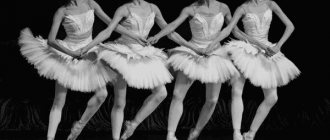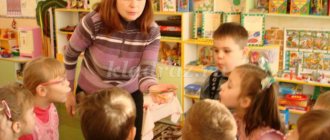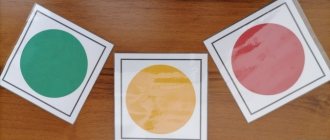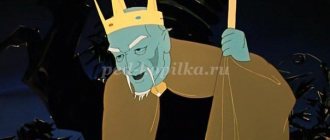Open vocal lesson theme “Rhythm”
PLAN – LESSON SUMMARY
Oksana Anatolyevna Grigorieva, additional education teacher, head of the vocal studio “Maximum” of the Children’s Creativity Center, Atkarsk, Saratov Region. Open lesson of a vocal club for 1-3 years of study, topic: “Rhythm”
Lesson topic: “Rhythm”
Purpose of the lesson:
creating a joyful, friendly atmosphere of the lesson, which promotes successful acquaintance with the elements of musical notation: scale, rhythm.
Lesson objectives:
- develop creative abilities by involving children in the emotional performance of chants, songs, and playing musical instruments;
- develop singing skills in the process of vocal and choral work;
- to form a sustainable interest in musical culture;
- cultivate patriotism and good relations with each other and with others.
Preliminary work.
- Learning tongue twisters, breathing exercises, diction, sound production.
- Individual work with children on learning songs and chants.
- Listening to music r.n.p. "Kamarinskaya".
Motivation:
The teacher asks the students to return the notes.
Hall decoration:
on the wall there is an image of a treble clef and a staff with notes; "Musical Caterpillar"
Equipment:
handouts, audio recordings, tape recorder, sheet music, percussion instruments (spoons, drum).
Hearing:
song “Do, re, mi” by the group “Domisolka” lyrics. V. Klyuchnikova,
music O. Yudakhina., “Song about a song”, “Russia”, r.n.p. "Kamarinskaya".
During the classes.
- Organizing time.
Formation in front of the hall.
Entrance with music:
The song “Do, Re, Mi” is playing.
Musical greeting
: “Domisolka” lyrics. In Klyuchnikova,
music O. Yudakhina.
- Introductory speech by the teacher.
I am very glad to meet you again.
The world of music is mysterious and amazing. This kingdom of sounds can only be understood by those who know how to hear and listen, to see the unusual in ordinary things, who love to dream and fantasize, who strive for knowledge and are hardworking. In this world, it is customary to express yourself in a special language - musical, which you guys have to master.
What does a composer need to know to record music or a performer to perform it? (Sheet music, musical notation).
Today in class, with the help of music, we will try to create a joyful, friendly atmosphere and get acquainted with the elements of musical notation.
We are going to the country of Music, where our friends are already waiting for us - Cheerful notes. And notes are written on rulers.
Five lines of musical notes
We called it "staff".
And all the notes on it are dots
We took our places.
Guys, look at the staff. Just this morning there were notes there, but suddenly they disappeared. We definitely need to get them back. Well then, let's go.
- Work on the topic of the lesson.
Guys, what can you travel with?
- Voice exercises (“Donkey”, “Airplane”, “Train”).
One note wants to return to its house. Before
We warmed up our vocal cords and reached the land of Music, where everyone sings.
You and I will sing too.
Review the rules of singing
(ask the children)
If you want to sit and sing
Don't sit down like a bear
Straighten your back quickly
Put your feet on the floor, be bold
- Chanting
"From the clatter of hooves"
- work on diction and dynamics:
- Clear diction;
- Strokes
- Working on dynamics;
- “Do, re, mi, fa, sol” lyrics. Z. Petrova, music. A. Ostrovsky
- Working on breathing;
- Construction of a triad
- Singing by hand
Well done, you did a good job with this task and returned the note D.
The note is attached to the staff.
What's your mood? Does music have a mood? Let's wish everyone: Good mood! And we will try to accurately convey the mood of this song “A Song about a Song”
. What is it like?
Performing the song “A Song about a Song”
(1, 2, 3 year old children)
The note is attached to the stave. Mi
Our journey continues. And now - a new task.
- Learning new material. Rhythm
1)
I will clap several times, and you will repeat what I show. Prepare your palms. Just listen carefully first. And you have to clap on my command and not loudly.
Examples of rhythmic dictations
1. "Kalinka"
2. “There was a birch tree in the field”
3. “Little Christmas tree”
writing a rhythmic pattern on the board
Did you notice that in every phrase that you repeated after me, clapping your hands, there were short and long sounds? The alternation of long and short sounds in music is called? rhythm.
Remember this new word. Repeat it.
The rhythm of a particular melody is a rhythmic pattern, i.e. element of rhythm. What durations does a rhythmic pattern consist of? (Quarter notes, Eighth notes, Sixteenth notes)
Duration
– duration of impact from impact to impact.
The rhythmic pattern consists of short and long durations
Rhythmic sounds are connected to each other, they can be even, smooth, or they can sound abrupt. Example:
The heart beats rhythmically, the clock ticks, the seasons change.
(example of children)
We come to the conclusion that order is created? (Even steps. Clear pattern. Uniform alternation of strikes.)
2) The task becomes more difficult.
Clap the rhythm: long sounds are hitting the knees, and short sounds are hitting the hands.
Any rhythm in music can be written with special notations. Today we will try to use signs and perform a rhythm.
3) Task “Musical caterpillar”
The board shows a caterpillar with large and small circles. Children clap rhythm.
4)
Exercise “Clock Choir”
Depending on the rhythm, the nature of the music changes. I suggest this exercise “Chorus of the Hours”
You need to depict the simultaneous movement of large and small clocks in a speech rhythmic two-voice. Group 1 says “bom-bom” in a low voice, and group 2 says “tiki-tiki” in a high voice.
The note is attached to the staff. F
No musical instruments emphasize the rhythm of the piece like percussion instruments. What percussion instruments do you know?
4) Playing music on musical instruments.
R.n.p. "Kamarinskaya"
What character? (perky, cheerful, mischievous)
What can be said about the melody (The melody changes and is repeated several times)
What instruments did you hear?
In Russian village dances there is not only a competition between dancers, but also a competition between instruments. The piece you listened to is called “Kamarinskaya”.
What used to be used for Russian dances?
So we will play music. instruments. First let's learn the rhythmic pattern.
performed by the teacher and students on percussion instruments “Kamarinskaya”.
They performed the piece wonderfully.
The note is attached to the staff. Salt
And now it’s time for us to take a walk through the fairytale forest.
- Physical exercise.
"Let's clap, stomp"
How wonderfully you moved,
And movement is health!
The note is attached to the staff. La
What a wonderful journey we have had through the musical kingdom-state. But the best country for any person is the one where he was born and raised, his Homeland. What is the name of the country where we live?
Performance of the song “Russia”
What is the mood of this song? What feelings does the author convey here?
The note is attached to the staff. Si
Guys, look at the staff.
Do, re, mi, fa, sol, la, si
These notes all form a scale.
So all the notes have returned home. Again we will sing and dance, play musical instruments.
- Bottom line.
Our journey has come to an end.
Who wants to share their impressions?
What elements of musical notation have we become familiar with? (rhythm, duration, scale).
Rhythm-
alternation of long and short sounds in music.
Duration
– duration of impact from impact to impact.
Scale
- this is a certain order of musical sounds that are used in music. Music staff with notes.
What interesting things did you learn? What do you remember most vividly? (We learned what rhythm is, played percussion instruments, sang as soloists, etc.).
VIII . Reflection.
Teacher:
I would like to know how you yourself evaluate your work.
Whoever thinks that he has done a good job, let him sing “A”,
and whoever thinks that not everything is working out yet
– “O”.
Children evaluate their work.
You can't part with music.
We've been in love with her since birth
And we won't tell her goodbye
Just: Goodbye!
They leave the class to the music.
Summary of vocal lessons for children 3-4 years old
Open vocal lesson for children of primary preschool age “Domisolka Country”
Goal: To develop pitch hearing and a sense of rhythm. Objectives: 1. Encourage children to engage in active vocal activity.
2. Strengthen the ability to sing in unison. 3. Develop the ability to listen to each other. 4. To promote the development of expressive, emotional performance in children: singing without tension, smooth, melodious. Progress of the lesson:
Teacher: Hello guys! Today we will go to a musical country called “Domisolka”. How will we go there? (children offer their own transport options)
.
Maybe we can go by train? Children: Yes! Teacher: Now everyone will choose the color of their trailer (each child names their color of the trailer in turn). Now we will all choose a driver together (we choose). We are building our magic train. 1. The train “We are going, we are going” Teacher: We arrive at the first station of the country “Domisolka”, called “Do”, the very first note. Oh, guys, we are greeted by the cheating fox. Lisa: Hello, little kids. What a wonderful little train you have, and what a beautiful one IT WAS. And I SLO-MA-LA. So you won't go anywhere further. Teacher: Oh, what a cunning and evil little fox you are! Guys, don’t be upset, let’s show the fox how we can warm up our tongues. And we will also show what kind and good guys we are. 2. Voice games (warm up the tongue) Teacher: Well, what did you like about the fox? Lisa: How smart and talented your guys are. How good it is to be kind and obedient. But I already broke your train anyway. Excuse me... Teacher: Well, should we forgive the fox? Yes! And the guys and I will go further by car. Let's also come up with a color for our car. Let's get ready, start our cars with magic keys. 3. Game “Cars” (to the song “We are going, going, going”). Teacher: Let’s stop, we have arrived with you at the second station “Mi”. Look, someone is coming to meet us. Who is this, guys? That's right, this is a cat, and his name is “Purr”. Cat: Hello guys! Teacher: Let's say hello to the cat affectionately. And now on high notes. And now on low notes. Well done! Cat: It’s so good that you came here. I'm so bored here, I really love singing. Do you guys like to sing? I’m tired of singing alone, so I go and sing “Meow, meow” all the time. Teacher: Don’t be upset, kitty, our kids can also sing like real singers. Cat: Singing, hmm I don’t know that word. Teacher: And the guys will teach you now. 4. Chants “Here I go up”, “I sing”, “I run”. Cat: How wonderfully you can sing, and you taught me this. Maybe you also know some songs? Teacher: We know, the kids will now sing the song “Spring” and “Drip-Drip” for us. Cat: Wonderful artists. Thanks Moore. Teacher: Thank you too, cat, and we will move on. 5. Game “Cars” (to the song “We are going, going, going”) Teacher: We came with you to the “Salt” station, oh, someone is coming towards us. Bear: Why did you come here? Teacher: Don’t be angry, little bear, the kids and their parents and I are traveling around the country “Domisolka”. Bear: Do you know how to play? Yes! And will you play with me? Teacher: Of course, let’s just let our parents play with the kids. Guys, invite your parents. We stand facing each other. 6. Game “Dariki”, “Sun”. Teacher: Well done! Did you like the bear? Bear: Of course, look, the fox is riding a train. Be careful with her, she's cunning. Teacher: No, little bear, she has become kind. Lisa: I was so ashamed that I repaired your beautiful train. Now you can move on. Teacher : And we will go home with our parents and children. It's time for us to return from our journey. 7. Game “Train Engine” (with parents). Teacher: Here we are, back from our trip. Did you enjoy our trip? Guys, let's please our mothers with a song. 8. Song “Mama Sunshine”. Teacher: Oh, look, the fox left us a box, and there’s a note in it. (Reading). And candy for our guys.
We recommend watching:
Children's opera-game "Cockerel" for the second group of early age (from 1 to 2 years old) Summary of a music lesson in the 1st junior group Musical entertainment for the younger group. Toy store Summary of a music lesson in a junior group on the topic: Spring
Similar articles:
Thematic lesson on the theme “Bunny” for children of primary preschool age




